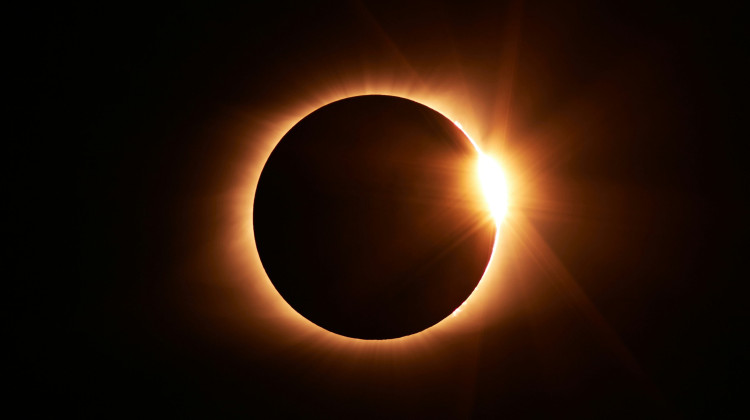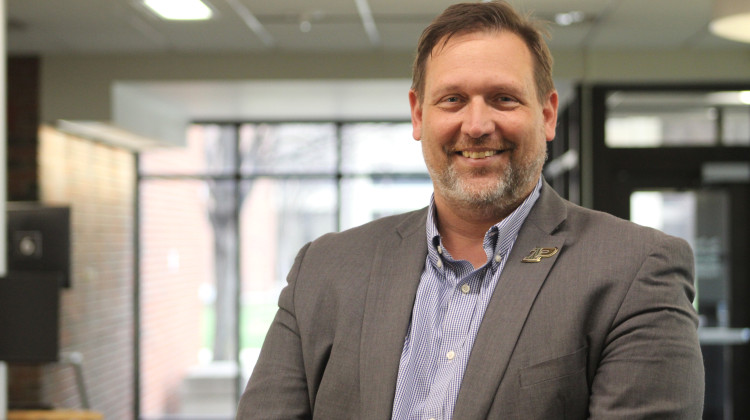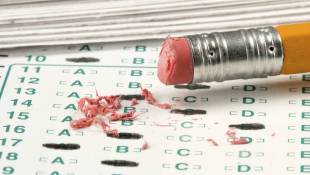Franklin College and Indiana University East produced the most effective teachers in Indiana over the past three years, according to an educator ratings report released by the Department of Education.
The report rated Indiana educators on a four-point scale – highly effective, effective, improvement necessary and ineffective. The study evaluated the effectiveness of teachers and administrators and compared that to where they earned their degrees.
Performance results revealed that only one of every 250 educators was ranked in the lowest category. And less than 3 in 100 were rated as needing improvement.
The report breaks out data for teachers in their first, second and third years so teacher prep programs at the state’s public and private colleges can be compared.
Statewide, 18 percent of new educators were rated highly effective, 71 percent were effective and 3 percent were listed as needing improvement or ineffective.
Overall, educators trained at private schools did better – and Franklin College, Anderson University and Bethel College ranked best.
“Having our school ranked as highly as it was – that’s incredible,” said Franklin College Education Department Chair Karen Burgard.
Burgard said Franklin students are at an advantage compared to other colleges throughout the state because education majors start their field work their sophomore year during the college’s January term. They spend the entire month in a classroom, observing, teaching, and receiving feedback.
“The clearest distinction is our focus on our field program. We’re a field based program,” Burgard said. “We have more clock hours than many of our peer institutions.”
Franklin junior Sarah White said the program “allows each student to have at least six placements in the field before you start your student teaching.”
“This gives you a first-hand feel at whether or not this is the right career for you,” she said. “You get to observe veteran teachers and teach lessons on your own.”
Education majors will have spent more than 1,000 hours in the field by the time they leave Franklin.
“We really prepare them. They know what they’re doing,” Burgard said. “They know what it’s like to be a teacher. They experience that job. But also, even bigger than the job and the career, they experience the essence of teaching and what that means and what those expectations are. The only way to become an excellent teacher is to teach.”
Franklin’s field program is proving to be effective. Forty percent of Franklin graduates rated “highly effective” after two years teaching experience and the other 60 percent rated “effective” – meaning none rated “improvement necessary” or “ineffective.”
“I feel extremely prepared to have my own classroom next year,” White said.
Private schools, on average, scored slightly better than public schools. Ninety-one percent of private school graduates in their first three years were rated effective or highly effective, compared to 87 percent of teachers who went to a state school.
Both private and public schools had 18 percent of teachers in the highly effective category.
The highest ranking public schools were Indiana University East, University of Southern Indiana and Purdue University.
“Preparing teachers involves numerous and integrated components,” Marilyn Watkins, dean of the IU East School of Education, said in a statement. “Pre-service teachers must have depth and breadth of content knowledge, be well versed in current research and strategies about how to teach, and have strong professional dispositions. They also need field experiences in a variety of school settings and grade levels.”
IU East teachers ranked the best overall – with 50 percent of its educators ranked highly effective and 43 percent ranked effective. And the school didn’t have any students ranked in the ineffective or improvement necessary categories.
“Indiana University East pre-service teachers receive a strong foundation in each of these areas in a program that well integrates theory and practice,” Watkins said. “Focus is placed on pre-service teacher’s ability to positively impact student learning and on their ability to reflect on their teaching.”
She said elementary education students at IU East have four field experiences and then a pre-student teaching experience.
“Pre-services teachers are placed with mentor teachers and are well supervised by faculty and university supervisors,” Watkins said. The students then move onto individual student teaching.
Secondary education students also complete a full internship year in the classroom.
Purdue had 30 percent of its recent graduates rank highly effective and 58 percent effective.
Compared to IU East and Franklin College, Purdue has significantly more students. Purdue had 60 students graduate from the education program last year, as opposed to Franklin’s 21 and IU East’s 14.
“I’m proud of that,” said Purdue President Mitch Daniels, a former governor. “I’m glad the school showed well. I’m not surprised.”
Daniels said he remembers when Purdue was noted as a top education school after Indiana implemented the Woodrow Wilson Fellowship.
The Woodrow Wilson Fellowship in Education Leadership looks for and prepares outstanding leaders from school districts and provides them with a master’s degree based on a business and education curriculum, in-school experience and on-going mentoring.
Indiana was the first state to implement the program.
Daniels said about five years ago, the fellowship sent an education expert around the state to observe all of Indiana’s education programs. The expert picked Purdue, the University of Indianapolis, and Ball State University as the premier education institutions in the state. Later, he added Indiana University-Purdue University Indianapolis as the best urban school.
“That was the first time that I saw that the Purdue School of Education had some validation and was one of the better ones,” Daniels said.
In addition to providing a morale boost for the college programs, the new state statistics are catching the eye of principals looking to hire new teachers.
“FC has always looked to when principals are hiring,” Burgard said. “Principles will call our field coordinators – Professor Hall and Professor Prather – and say ‘I have a job opening. Do you have any seniors because I’d like to interview them.’ Our program is renowned in the state.”
White echoed Burgard’s sentiments. “The placement rate after graduation is very high,” she said. “Last year every elementary education major was able to find a job before the next school year began.”
The study is the product of a 2011 law passed by the Indiana General Assembly requiring public school districts to establish a system to review their licensed educators. That would include an assessment of anyone working for the school district that needs a license to do his or her job — including teachers, counselors, administrators and others.
The law doesn’t mandate a specific evaluation system but does require student test results to play a “significant” role in determining the ratings. Classroom observations and school performance can be other factors. Districts were able to develop their own systems for determining teacher ratings or choose among several models.
Kruse said the goal is to help colleges learn how well their graduates are prepared for the classroom and to let superintendents know where to find the best teachers.
“I think the competition it creates at the colleges will be good,” Kruse said. “They’ll have to have their teachers rated well or they won’t be getting new students to enroll.”
The data shows that first year teachers are less likely to be rated as highly effective and more likely to be rated as ineffective than their colleagues.
“I think it will help inform all (principals),” said Todd Bess, executive director for the Indiana Association of School Principals. “I think in any profession we always want feedback that’s what helps makes our programs better.
Paige Clark is a reporter for TheStatehouseFile.com, a news website powered by Franklin College journalism students.
Correction: This story has been altered from the original version to more accurately reflect the percentage of graduates from private and public colleges who were rated effective or highly effective. Also, the post no longer includes a graphic that had incorrectly categorized three private schools as public ones.
 DONATE
DONATE





 View More Programs
View More Programs




 Support WFYI. We can't do it without you.
Support WFYI. We can't do it without you.